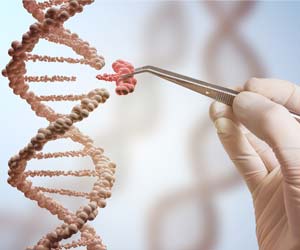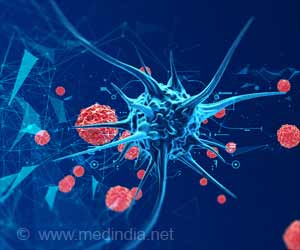Novel way to make genome editing safer for blood disorders without the unwanted effects of cancer by using specific nucleases and vectors has been discovered by scientists.
- Genetic blood disorders like thalassemia, sickle cell anemia and primary immunodeficiency syndromes can be cured by using CRISPR gene editing techniques
- Stem cells have a way of responding to gene editing by shutting down and this process actually increases the risk of cancers
- Scientists have found a way to make genome editing safer for blood disorders minus the side effects
- They used more precise gene editing techniques like specific nucleases and vectors to induce fewer breaks in the DNA thus controlling the stem cells’ natural damage response pathways
Read More..
Gene Editing can be made ‘Safer’ for Blood Disorders
p53 is a protein often termed the ‘guardian of the genome’ as it preserves the stability of DNA and prevents against unwanted mutations. When CRISPR is used to cut genes, it cuts the two strands of the DNA at a specific location. This action of cutting the DNA strands can actually send out a wrong signal to p53 communicating that there is something going wrong in the DNA.p53 then starts its action and prevents the cells from multiplying while the desired effect is actual proliferation cells as a therapeutic. The difficulty of p53 is that it cannot be silenced or shut down as this can lead to cancers. p53 is the body’s main defense mechanism against cancers.
The research team found a simple method to overcome this obstacle with p53. Gene editing techniques use genetic scissors like nucleases to induce DNA breaks and then uses a viral vector to insert the corrected sequence. If the genetic scissors are not specific, more than the required DNA breaks will be induced which gives out the wrong signal to p53.
Use of Specific Nucleases and Vectors
The team used specific nucleases and vectors to induce only the intended DNA breaks in hematopoietic stem/progenitor cells (HSPCs).Luigi Naldini, senior co-author and director of the institute, said that if the genetic scissors are not specific enough, there will be more than the intended breaks and consequently off-target effects like a prolonged p53 response. Using highly specific nucleases and extra purified reagents can actually eliminate these unwanted side effects.
Rafaella di Mico, third author and head of a lab at the institute said that HSPCs tolerate only a few DNA breaks with transient p53 activation. Inactivating p53 response temporarily during gene editing can improve the yield of cells with greater proliferation and desired effects without disturbing the genome’s stability or increasing the risk of unwanted mutations.
References:
- Precise Gene Editing Preserves Hematopoietic Stem Cell Function following Transient p53-Mediated DNA Damage Response- (https://doi.org/10.1016/j.stem.2019.02.019)
















